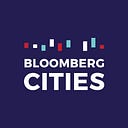How cities can apply to get world class innovation training
It’s often said that innovation is a team sport — and in City Hall, it’s no exception. It takes diverse teams of people tackling a challenge from different perspectives to come up with truly breakthrough ideas.
That’s why Bloomberg Philanthropies’ latest support for cities isn’t just focused on Chief Innovation Officers, but on the talented staff that they work with across their local governments. Together, they will spend nine months tackling their cities’ toughest challenges while getting coaching in how to apply human-centered design techniques to find the most innovative solutions.
Cities of any size anywhere in the world are eligible to apply — but they must have someone on staff in the role of Chief Innovation Officer. To express interest in the program and receive application materials, send an email to innovationtraining@bloomberg.org.
[Get the latest innovation news from Bloomberg Cities! Subscribe to SPARK.]
The new nine-month innovation intensive program is aimed at helping city administrations that are already taking steps to build up their innovation capacity to take this work to the next level. Whether they’re just getting started in this area or already have dedicated innovation teams, the intent is to broaden and deepen their work to create even more impact for residents.
“This program is about helping cities strengthen their innovation efforts,” said Stephanie Wade, lead for innovation programs at Bloomberg Philanthropies. “It will grow the number of people across City Hall who know how to solve problems in new ways so that they can be change agents in their own departments.”
The program builds on a successful training program delivered to 13 cities earlier this year. Cities from Tacoma, Wash., to Trenggalek, Indonesia, assembled staff from across city departments to apply the training to problems selected by their mayors. The team in St. Paul, Minn., for example, focused on how to help people exiting the criminal justice system to find stable housing. In Helsinki, they worked on finding ways to increase physical activity for people age 64 and up.
These teams flipped upside down the way government often works.
Instead of moving quickly toward solutions based on conventional wisdom, they took time to deeply understand the root causes of the problems they worked on and build empathy for residents impacted by them — the humans of human-centered design. They conducted field interviews with these residents, engaged them in the ideation process, and prototyped solutions with them to get feedback and help refine their ideas.
[Read our explainer on human-centered design]
Cities that have received support of this kind have made progress on critical problems and are equipped to apply their skills to new problems in the future. Examples include:
- The city of Sioux Falls, S.D., improved their public transportation system so residents could more reliably get to work. As a result of the training, they’re launching a pilot program this year that will improve resident access and ease of use.
- In Durham, N.C., the city found that revoked drivers’ licenses were a significant barrier to economic opportunity, especially for residents involved with the justice system. The city’s innovation team helped 35,000-plus people remove more than 52,000 outstanding traffic charges from their records, which brought them one step closer to restoring their driving licenses. An additional 3,900 residents had more than $1.2 million in unpaid traffic tickets waived
- The city of Los Angeles received Fast Company’s 2018 World Changing Ideas award in recognition of its work tackling a housing shortage by making it easier to build backyard homes or accessory dwelling units (ADUs). Following regulatory reform, Los Angeles dramatically increased the number of ADU permits issued by the city. The 2,342 permits issued in 2017 was more than the combined total between 2003 and 2016.
The new innovation training program will scale up this approach so that more cities can learn to use it.
Selected cities will receive support from a design coach who will work with them in person and remotely on applying innovation techniques. City staff also will attend virtual classes designed to build skills, internalize lessons learned, and identify how to overcome barriers to solving problems in new ways. Additionally, they’ll gain opportunities to network and build relationships with colleagues in other cities who are similarly engaged in the work of building a more innovative culture in local government.
Cities must apply for the program by December 3. The training will kick off early in 2020.
